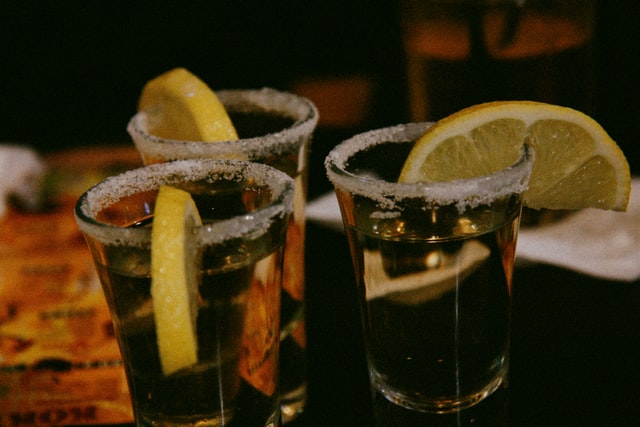Tequila Manufacturing – How does The Real Process Happens?
Did you know that it takes approximately eight to twenty years to produce a bottle of Tequila? That’s right; the process requires several steps to give out the fine Tequila that everyone enjoys.
Tequila is a unique type of liquor; extracted from the Weber blue agave plant (Agave tequilana). The plant takes almost ten years to be fully ripe and harvested.
Although the drink is somehow expensive, many people enjoy sipping it so much. Judging from the quality and incredible flavor of the tequila drink, for sure it is a beautiful experience.
Many of us enjoy this excellent drink and don’t even know the methodology used in its manufacture. It is about time that every consumer understands the origin of Tequila.
Read on to more about the manufacturing process of Tequila, starting from the harvest to the drink’s packaging.

How is Tequila made
Tequila production dates back to the 1600s in Mexico. The true origin goes back around 250 years back.
As mentioned before, the manufacture of Tequila takes a long time. It involves a step-by-step process.
Here are the steps followed in the manufacture of Tequila.
1. The harvest of the Agave
The agave plant is harvested from the plantations. Many tequila producers are involved in the harvesting process of their own Agave plantations.
The blue agave fields occupy a great strip of Jalisco’s landscape. Almost 300,000 people are involved in making the product.
The plant takes almost ten years to reach its peak ripeness. The plant is now ready for the Jima.
2. The Jima
The Jima process involves cutting the plant’s leaves down to its base. The harvesters keep the head or the heart of the Agave, called “piña”.
The Agave can now be taken to the tequila distilleries for further processing.
3. Baking and mashing process
The production process starts with baking and mashing the agave heads.
Baking is done by water steam pressure, either in the traditional masonry oven or in autoclaves. The baking process in the conventional masonry oven takes about 48 hours, while the autoclave takes 12 hours.
The essential purpose of this stage is to convert the inulin (agave sugar) into fermentable sugars like fructose and sucrose.
Later, the baked Agave is transported to mills and cut into a few pieces.
4. Shredding of the Agave
The shredding process is done to prepare the agave fibers for sugar extraction.
5. Extraction
This process involves applying water to the baked agave head. The mixture is mashed to extract the sweetness and then squeezed into conveyor belts.
The honey is separated to continue with the manufacture. The honey produced is then deposited to the tubs of formulation for tequila production.
6. Formulation
The process involves mixing at least 51% of sugars from agave and no more than 49% of other kinds of sugars. Tequila 100% agave, works only with the agave sugars. After the formulation process, the mixture is now ready for fermentation.
7. Fermentation
Fermentation is one of the most critical stages of the manufacturing process. The sugar is transformed into ethyl alcohol and others in smaller proportions at this stage.
The fermentation takes place in big stainless-steel containers.
The fermentation time depends on the environmental temperatures and height, which are not constant. Under low temperatures, the process may even take more than 24 hours.
8. Distillation process
In this stage, a lot of heat and pressure is applied to separate the enzymes in the alcohol content. The process takes place in stainless steel or copper containers.
The ordinary containers have three parts: the boiler where the Must (product after fermentation) is deposited for heating; the column, which collects and conducts steam; the coil, which cools the vapor.
In providing a pure Tequila, there have to be two distillation processes. The first process is called the crushing and the second rectification.
Rectification increases the alcohol content and eliminates any undesirable product.
9. Filtration
Different methods are used to filter every Tequila. We use carbon filters to filter the Tequila through cold temperatures to remove excess fatty compounds.
Another filtration process ensures that no particulates are present in the liquid. The filtration helps to give Tequila a shiny look.
10. Aging
The longer the tequila ages, the more color, and tannins the final product will have. Tequila is mainly aged in white oak wooden barrels.
For two months, the “Reposado” Tequila is kept in white oak wood containers. The “Anejo” tequila is kept in the white oak barrels for 12 months.
The extra-aged Tequila is kept in the wooden barrels for at least 36 months.
11. Blending and assembly
In this process, demineralized water is added to the Tequila to adjust its gradation. Some tests are conducted to assure consistency according to Sauza’s standards.
Conclusion
By reading this article, you learned the basics steps of production and understand how Tequila is made. This is the first step you have to master before thinking on creating your own tequila brand.
In Aceves spirit, we select the best projects and design for them the best Tequilas.
Visit our website for more details.




Latest posts